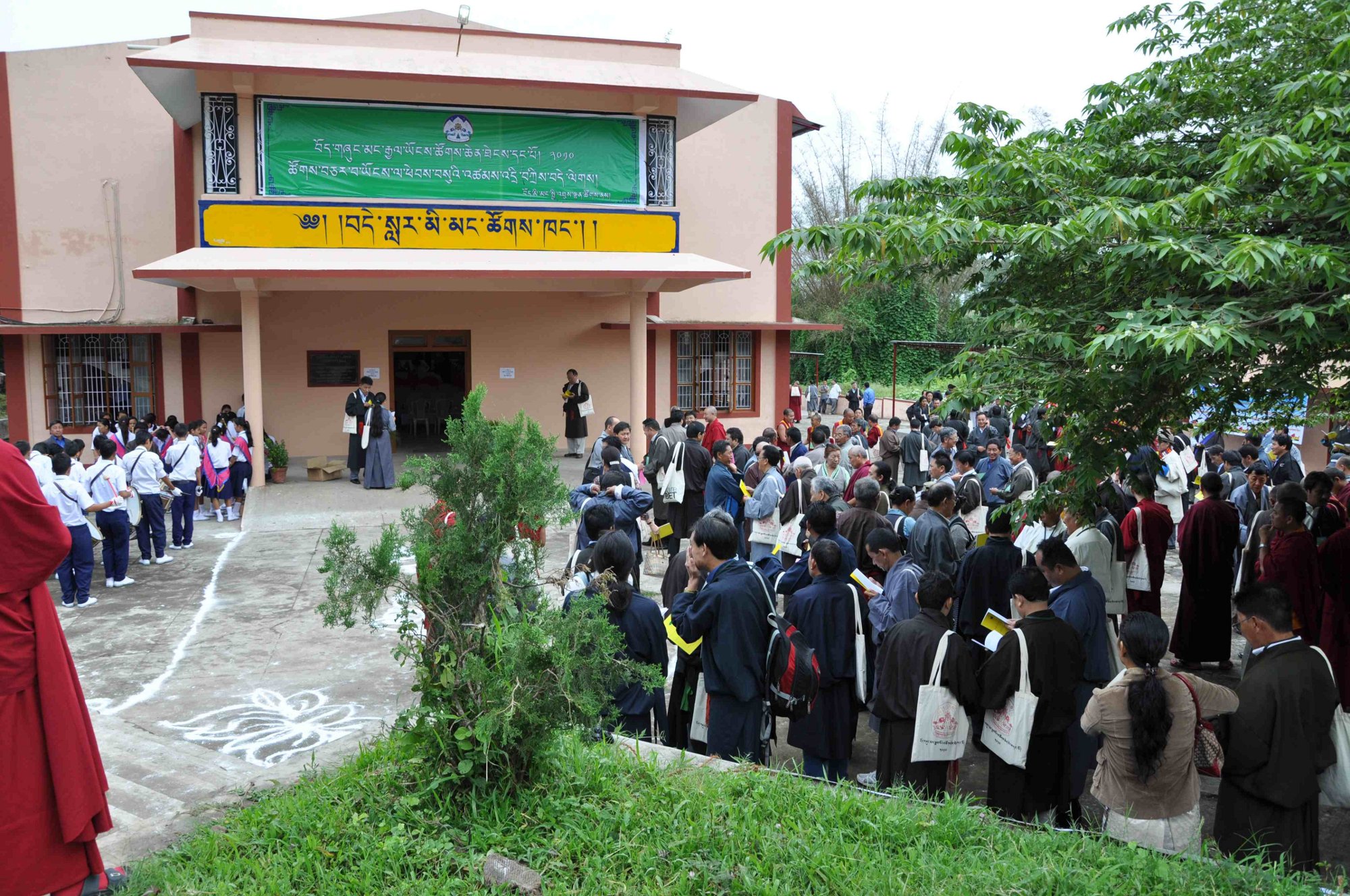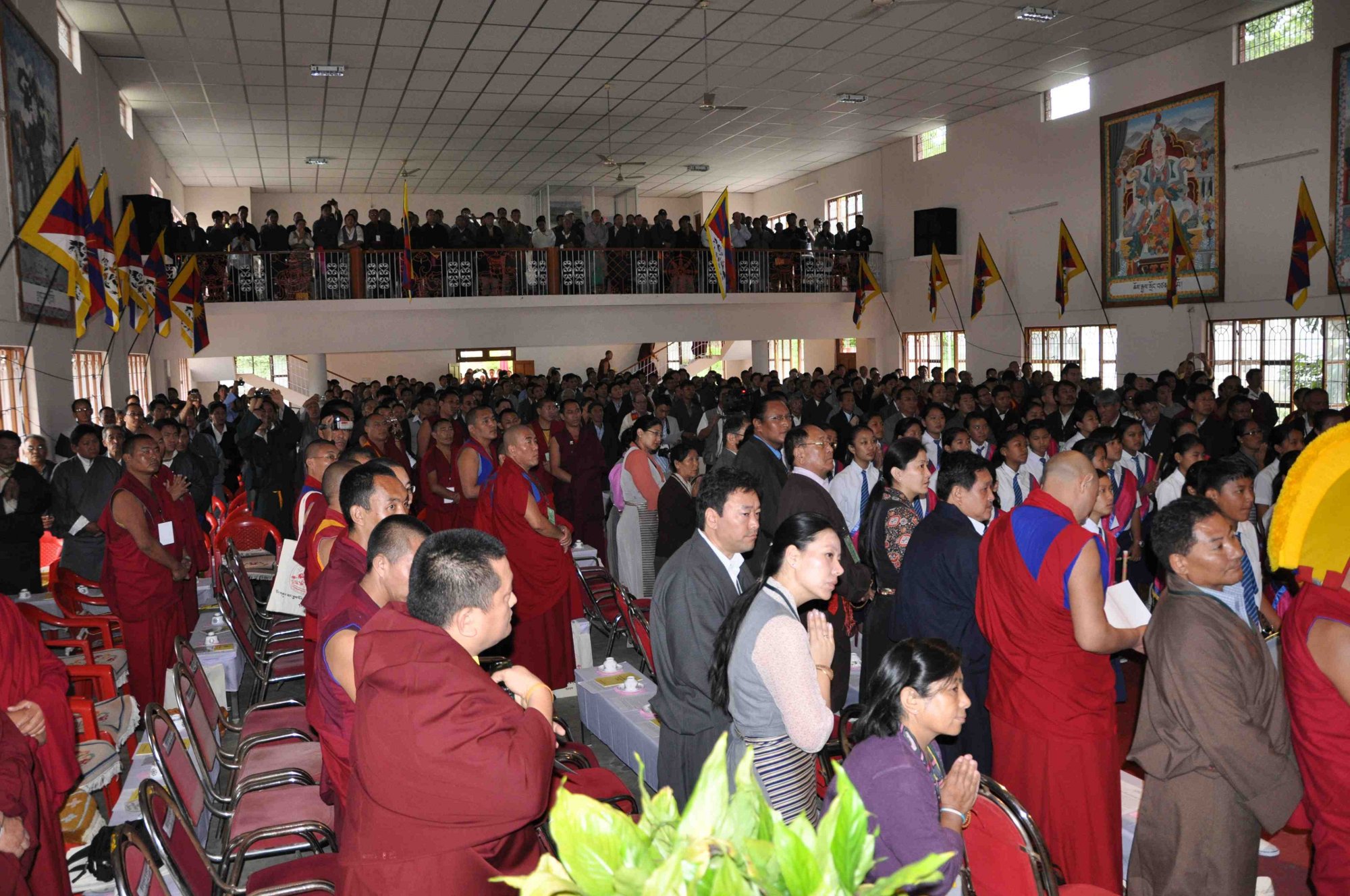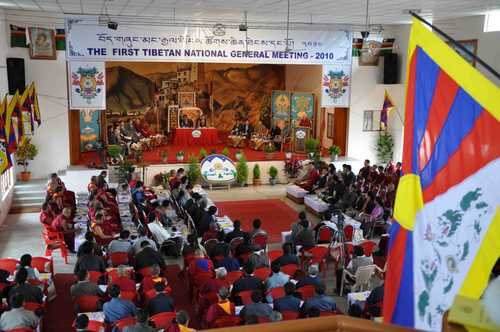Speaking on the closing day of the 6-day meeting, His Holiness  emphasised that unity has to be developed through trust and transparency between the administration and public which in turn will strengthen their efforts.
emphasised that unity has to be developed through trust and transparency between the administration and public which in turn will strengthen their efforts.
Dalai Lama called for more frequent and interactive meetings between the administration and general public.
The meeting also passed a unanimous resolution entreating Dalai Lama not to retire from leading the Tibetan struggle. Responding to the appeal, His Holiness said the democratically elected leadership of Tibetans in exile must be able to take full responsibility in leading the quest of Tibet in his absence.
Role of international community
Speaking on the efforts in resolving the issue of Tibet through the Middle-Way Approach, Dalai Lama said the policy is strongly supported by the international community, including the US government, EU Parliament and government of India.
With a strong commitment to a mutually beneficial solution for both the People´s Republic of China and Tibet, I feel very confident to express our approach when meeting with the Chinese people, he added.
Acting Kalon Tripa Tsering Phuntsok conveyed the real aspiration of the Tibetan people appealing Dalai Lama not to abdicate from leading them, and use his wisdom to decide the course of action on Tibet in accordance with the changing political situation in the People´s Republic of China and the world at large.
his wisdom to decide the course of action on Tibet in accordance with the changing political situation in the People´s Republic of China and the world at large.
Education and culture
His Holiness also spoke about the need to make progress in education, to strengthen the preservation of Tibet’s culture and to maintain the moral behaviour of the Tibetan people.
The speaker of the Tibetan Parliament-in-Exile, Mr Penpa Tsering read out a 32-page final recommendation to strengthen democracy, sustenance of settlements, finance, education, health, awareness of political affairs and publicity of Tibetan issue.
He said the Kashag (Cabinet) and the Tibetan Parliament-in-Exile will make utmost efforts to implement the recommendations of the national general meeting even though they are yet to become laws.
The Kashag called for cooperation of the Tibetan Parliament, intellectuals, non-governmental organisations and the community in its efforts to implement those recommendations which are feasible. The Kashag said it will make best efforts to strengthen the sustenance of settlements, education, health, finance, advocacy of Tibetan people.
Background
After the Chinese army crushed the Tibetan national uprising of Lhasa  in 1959, Dalai Lama established the Tibetan exile administration in the north Indian hill station of Mussoorie. Named the Central Tibetan Administration (CTA) of His Holiness the Dalai Lama, this is the continuation of the government of independent Tibet. In May 1960, the CTA was moved to Dharamsala.
in 1959, Dalai Lama established the Tibetan exile administration in the north Indian hill station of Mussoorie. Named the Central Tibetan Administration (CTA) of His Holiness the Dalai Lama, this is the continuation of the government of independent Tibet. In May 1960, the CTA was moved to Dharamsala.
CTA is commonly referred to as the "Tibetan Government in Exile". The CTA has set itself the twin task of rehabilitating Tibetan refugees and restoring freedom and happiness in Tibet.
The rehabilitation agenda includes three important programmes: a) promoting education among the exile population; b) building a firm culture of democracy; and c) paving the way for self-reliance so that the Tibetan people are able to survive with the self-esteem and confidence that flows from not having to depend on external assistance.
In CTA’s manifesto for future Tibet, entitled the Guidelines for Future Tibet’s Polity and Basic Features of its Constitution, His Holiness the Dalai Lama stated that the present exile administration would be dissolved as soon as freedom is restored in Tibet.
Find out more about Tibetan Government in Exile here and here.
HRH Oslo, based on Tibetan Central Tibetan Administration press release published at Tibet.no.





